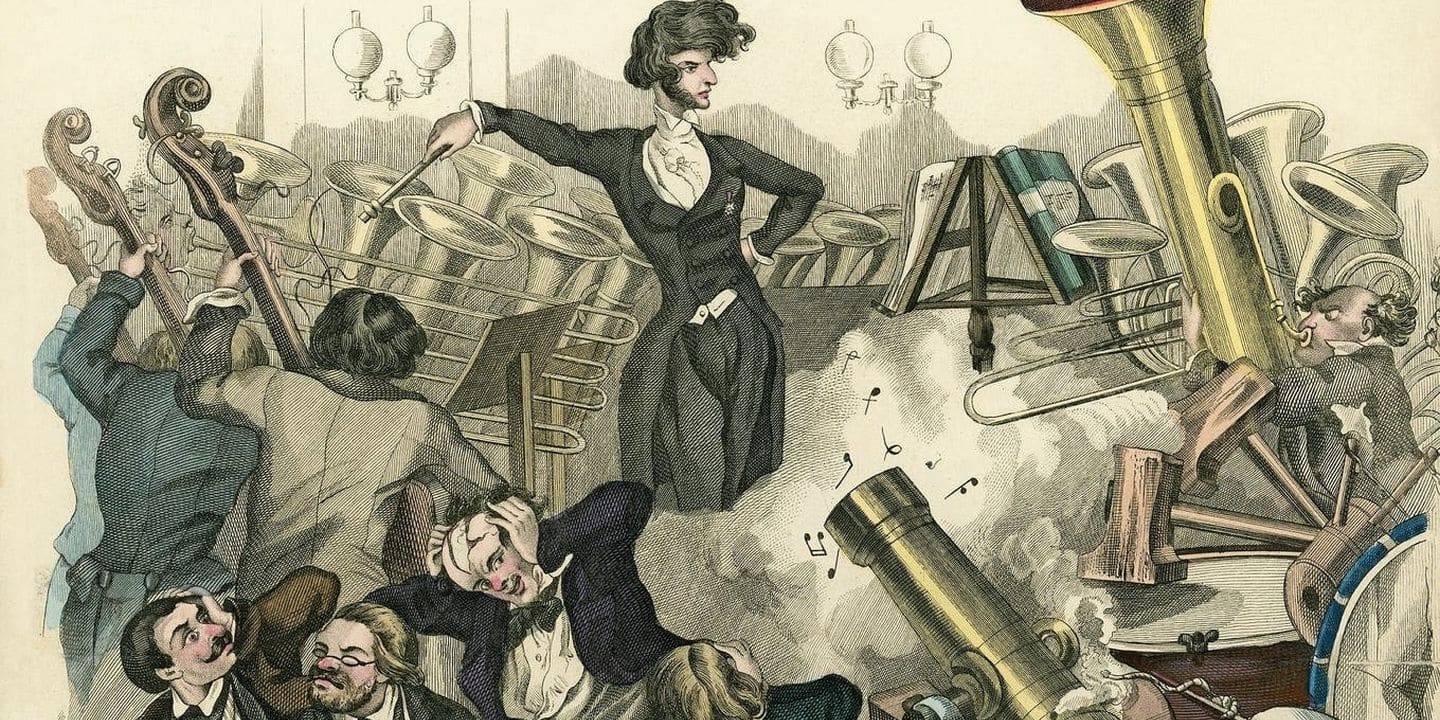Lördag 9 november, kl. 18
Katarina kyrka, Högbergsgatan 13a Stockholm – SLs reseplanerare
Söndag 10 november, kl. 16
Katarina kyrka, Högbergsgatan 13a Stockholm – SLs reseplanerare
Grande Messe des morts
Hans Vainikainen och Katarina församling slår sig samman än en gång med Orkestern Filialen för att genomföra ett mastodontverk, denna gången Berlioz Requiem. Det blir inte bara en, utan fyra fjärrorkestrar, en i varje väderstreck, förutom huvudorkestern som som vanligt sitter i korset i kyrkan!
Bilden: Karikatyr av tonsättaren Hector Berlioz från 1850 ritat av Anton Elfinge, via Wikimedia Commons.

Hans Vainikainen, dirigent

Lars Cleveman, tenor

Katarina körer
Om musiken
The Grande Messe des morts (or Requiem), Op. 5, by Hector Berlioz was composed in 1837. The Grande Messe des Morts is one of Berlioz’s best-known works, with a tremendous orchestration of woodwind and brass instruments, including four antiphonal offstage brass ensembles. The work derives its text from the traditional Latin Requiem Mass. It has a duration of approximately ninety minutes, although there are faster recordings of under seventy-five minutes.
In 1837, Adrien de Gasparin, the Minister of the Interior of France, asked Berlioz to compose a Requiem Mass to remember soldiers who died in the Revolution of July 1830, to be performed on the anniversary of Marshal Édouard Mortier’s death in Fieschi’s assassination attempt on Louis Phillippe in 1835. Berlioz accepted the request, having already wanted to compose a large orchestral work. Meanwhile, the orchestra was growing in size and quality, and the use of woodwinds and brass was expanding due to the increasing ease of intonation afforded by modern instruments. Berlioz later wrote, ”if I were threatened with the destruction of the whole of my works save one, I should crave mercy for the Messe des morts.”
After the originally planned performance was cancelled, a ceremony commemorating the death of General Damrémont and the soldiers killed at the Siege of Constantine provided the occasion for the premiere at Les Invalides, conducted by François Habeneck on 5 December 1837.
In his Mémoires, Berlioz claimed that at the premiere of the work, conductor François Habeneck put down his baton during the dramatic ”Tuba mirum” (part of the ”Dies irae” movement) while he took a pinch of snuff, prompting the composer to rush to the podium to conduct the rest of the work himself, thereby saving the performance from disaster. The premiere was a complete success.
Berlioz revised the work twice in his life, first in 1852, making the final revisions in 1867, only two years before his death.
Från Wikipedia.








KONSERTER
Kommande konserter
1 novemberKommande konserter
2 novemberKommande konserter
6 december